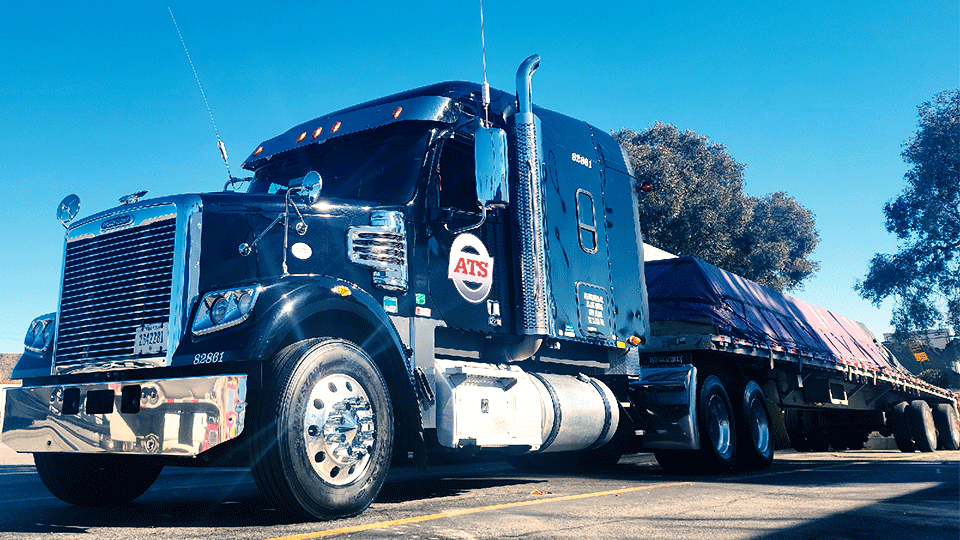
Open-deck shipments hauled on flatbed, step-deck and double-drop trailers keep American supply chains rolling along. With assistance from service providers like asset trucking companies and freight brokers, shippers with open-deck freight to move can do so timely and cost-effectively.
These loads, however, aren’t always easy to facilitate and manage. Without proper planning, communication, relationships and understandings, it’s not uncommon for flatbed shipments to go awry — sliding off course at the detriment of all stakeholders.
As a shipper that uses open-deck trailers to move your freight, you have a special interest in getting these loads right. That said, sometimes this can feel easier said than done.
Here at Anderson Trucking Service (ATS), our open-deck division, ATS Specialized, has been helping companies — of all shapes and sizes — move their freight since 1955.
Over time, experience has shown us how detrimental certain issues — issues that, although common, are avoidable — can be for open-deck shippers.
When it comes to preventing these problems on your next shipment, first and foremost, it’s important that you know what they are. In turn, this understanding will help you recognize these problems before they arise and take corrective action when they do.
In this article, you’ll find comprehensive outlines of, and tips for avoiding, the six most common problems that can occur with open-deck shipments, which are:
- Lack of communication on specific cargo details
- The impact of tight, rigid pick-up and delivery timeframes
- Having a limited pool of acceptable trailer types
- Not considering cargo value during planning
- Cargo damages that can occur due to strapping and tarping
- Issues maneuvering trailers around facilities and job sites
#1: Lack of Communication on Specific Cargo Details
Regardless of what type of product you’re moving or what trailer you use to do so, lack of communication –– and the confusion stemming from it — is always important to avoid.
Successful open-deck transportation is dependent on a number of variables — and the proper communication of them between parties.
For a trucking company to do its job effectively and follow through on the commitments it makes, having access to commodity-specific information is a must.
Without detailed knowledge surrounding the pickup, transport and delivery of a load, things like prolonged delays and unforeseen price increases can occur.
Think about it: without understanding what they’re getting into, exactly what type of freight they’ll be hauling, what the dimensions of that load are and any/all special instructions surrounding its transit, how can your trucking company or their driver possibly meet your needs?
In situations when wires get crossed or important details — such as a shipment’s size or commodity type — get left unsaid, successfully facilitating an open-deck shipment becomes something of a game of chance. And you don’t want the success of your supply chain to depend on luck.
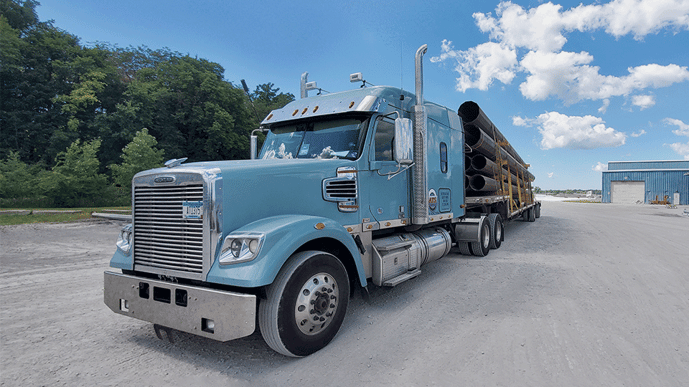
How to Avoid This Issue
To avoid supply chain and budgetary issues stemming from miscommunication — or a lack of communication entirely — you’ll want to understand what details are important to trucking companies.
Although situations vary, making this by no means a comprehensive list, here are the most crucial bits of information you should supply for each open-deck shipment:
Cargo-specific information to include
- What are the dimensions of your cargo? (not loaded dimensions, piece dimensions)
- Cargo length
- Cargo width
- Cargo height — at its highest point
- Total cargo weight
- What are the specifics of your commodity?
- What is your cargo specifically? (e.g. machinery, steel I-beams, etc.)
- Does your freight have sharp edges?
- Is your cargo multiple pieces?
Location/contact-specific information to include:
- Exact locations of pickup and drops
- Address of pickup location (city, state, street address, zip code)
- Address of drop-off location (city, state, street address, zip code)
- Contact information for stakeholders
- Phone number and email for onsite personnel
- Phone number and email for consignee
- Specifics on where to park and enter
- Which side of the building, which gate, etc.
At the end of the day, the more information you provide during the early stages of your shipment, the better off all parties will be. It’s far easier for your trucking company to plan out the transport of your load effectively with too much information rather than with too little.
#2: The Impact of Tight, Rigid Pickup and Delivery Timeframes
Sometimes, shippers with open-deck freight to move — especially if they’ve got a lot of it — ask their carrier(s) to have a truck arrive within a strict, limited timeframe on a certain day.
For specialized trucking companies, which seem to always have plenty of cargo to move, these rigid requirements can be difficult to meet. And, unbeknownst to the shippers that hold them, in many cases, tight appointment windows affect the pricing they receive.
You see, trucking companies are highly vigilant about the movement of their trucks.
Failure to keep their assets (trucks and trailers) loaded and moving comes at the detriment of each carrier’s bottom line. And, when a shipper has a rigid set of needs — requirements that can’t be changed — it’s sometimes inconvenient for trucking companies (which have plenty of other commitments) to meet them.
For example, an 8 a.m. Monday morning pickup appointment means that the driver assigned this load must either be empty first thing Monday and be very close to this next load or sit empty over the weekend — both of which are very limited options.
Planning for this event, however, takes oversight, adjustment and, in some cases, sacrifice by a driver — raising freight rates to mirror this rigid schedule.
Asking a carrier to have a truck at your door at a specific time (like 1 p.m., for example) not only forces them to plan around this commitment, but it lowers your pool of viable options as well.
Instead, opening up these timeframes to between 11 a.m. and 1 p.m. on Tuesday would give your provider far more flexibility. Now they don’t need to find your solution from trucks located in your immediate area. Provided enough lead time, a solution that’s currently 150 miles away becomes an option here, and your carrier will not need to exclusively locate someone in the immediate area.
How to Avoid This Issue
To avoid boxing yourself, and your trucking company, into difficult situations stemming from rigid timeframe requirements, consider opening up these windows.
When possible and done properly, flatbed shippers find great value in giving their carriers a bit more leeway to work with. Examples of this in practice include but aren’t limited to:
- Instead of planting firmly on an 8 a.m. pickup appointment, try a timeframe of 8-10 a.m. instead — or go broader if you can make that an option. (The bigger the window, the higher the likelihood that your preferred carrier can match an available truck to your shipment and avoid raising your price as a result of rigid requirements).
- Instead of requesting a driver pick up your load on a Friday at 3 p.m. to deliver Monday when it is just 400 miles, adjust your schedule to allow for a same-day pick and drop, or late day pick and next morning drop.
- Plan for the least amount of time a driver needs to be on a load to allow yourself to pay less for the shipment rather than the driver being on a short run for several days.
- Consider asking your carrier suggestions on pick and delivery and see how this fits your schedule. In most instances, you’ll find this conversation is well worth having.
Each of these is a specific way to save money by simply adjusting your pickup/drop-off requirements. Avoid these issues entirely by adding some flexibility to your appointment scheduling practices going forward.
#3: Having a Limited Pool of Acceptable Trailer Type Options
The transportation industry is bursting with trailer types — each created to solve a specific set of shipper needs. That said, when it comes to the transportation of open-deck cargo, many shippers fail to take advantage of this diversity.
Some companies get comfortable using a well-worn trailer type or two — deciding to avoid, for one reason or another, alternative options. In the flatbed transportation marketplace — a marketplace that seldom rewards inflexibility — these businesses inadvertently set themselves back in doing so.
In an industry with a pricing structure that’s heavily driven by supply and demand, the more options (and therefore supply) shippers have to choose from, the lower their prices usually are.
Unfortunately, limiting a carrier’s options by stating that a load is “flatbed only” even though to their knowledge — given years of experience — a step-deck would also work, is far from an uncommon practice.
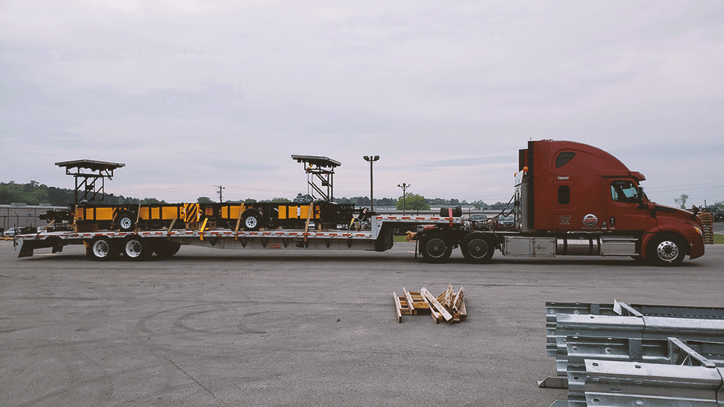
How to Avoid This Issue
Building trust and relationships with your providers through repeat use will go a long way here. You see, the best flatbed trucking companies have transportation experts on hand that intimately understand the dimensional capabilities of every trailer type.
And, given the benefit of the doubt — coupled with the appropriate commodity specifics — this expertise can provide mutual value as they connect your freight with its true best-fit solution.
Often, there’s a strong correlation between the price a shipper pays and the service level they receive. However, allowing trailer-type flexibility can cut costs, and in many cases, improve provider performance.
#4: A Failure To Consider Cargo Value During Planning
On the whole, flatbed shipments can vary greatly in value from one load to the next.
And, though the vast majority of these loads fall under the protection of the $100,000-$250,000 insurance coverage held by most carriers, some don’t.
Securing timely and cost-effective capacity for high-value loads — loads that exceed $250,000 or more — can be difficult. The increased risk associated with hauling high-value cargo, coupled with the minuscule pool of carriers equipped to insure them, can create problems for some flatbed shippers.
Without planning for these difficulties and taking steps — like self-insurance or the deconsolidation of larger loads — to mitigate the potential side effects of moving this freight, shippers see their bottom lines suffer and unnecessary delays occur.
Related: Why Does High-Value Freight Cost More to Ship? [And How to Save]
How to Avoid This Issue
Asking a carrier to provide insurance protection for high dollar value shipments often slows timelines while qualified drivers are located and/or insurance riders are purchased. In some instances, flatbed trucking companies may choose to avoid these loads entirely — forcing shippers to look elsewhere.
While moving this kind of open-deck freight is unavoidable and there are plenty of companies that specialize in doing so, here are two tactics for avoiding the freight rate increases that accompany these shipments:
-
Consider self-insuring high-value shipments
Purchasing individualized cargo coverage for high-value freight is an option many businesses employ on these moves. In doing so, these companies avoid the struggle of finding and waiting for a qualified transportation solution.
Additionally, self-insured cargo is more attractive to trucking companies as it limits the level of risk they shoulder for these moves and their options (trucks, trailers and drivers) for doing so.
-
Consider dividing high-value full truckloads
Sometimes, for multi-piece high-value shipments, it can make sense for these commodities to be separated — thereby decreasing the total value per load. Though this tactic won’t apply to every situation, if your flatbed freight is of high value collectively, it may be worth consideration.
#5: Cargo Damages Due to Strapping and Tarping
Cargo damage is top-of-mind for every shipper. Everyone wants three things for their shipments: that it will get where it’s going on time, on-budget and damage-free.
For open-deck shipments, which by their very nature must weather unavoidable exposure to the elements, achieving this last point takes special care.
However, sometimes the things that keep cargo safe like tarps, corner protectors, straps and chains, inadvertently cause damage.
Here’s how. . .
Tarping open-deck shipments is a great way for companies to protect their cargo from the impact of harsh weather (wind, precipitation, etc.). That said, this often leads to superficial scrapes and imprints due to the repeated rubbing of tarps against the products in transit — particularly on longer hauls.
Chains and straps on the other hand, which are used for securement purposes, have been known to damage cargo at pinch points; crushing more feeble areas, removing paint and causing scratches.
Without understanding the potential for cargo to get damaged in this way, companies often run into problems getting pristine products to their end customers. And, in the long run, quality issues may come at the detriment of your reputation and income.
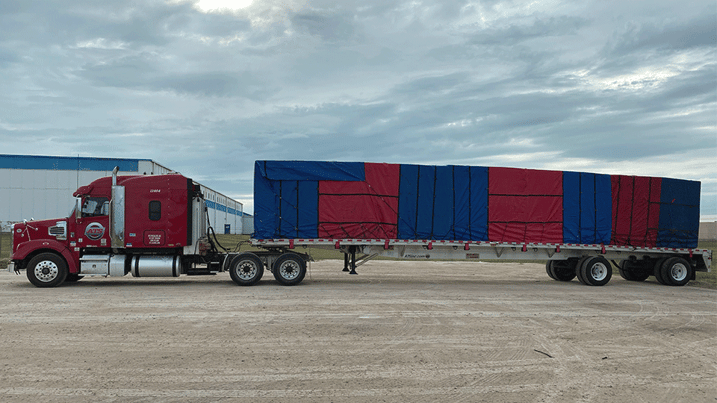
How to Avoid This Issue
The most effective way for your business to avoid these issues on future shipments is to be present during securement processes. In the end, you know your product better than anyone else. For this reason, it’s important that you point out to truck drivers your freight’s points of weakness and help them avoid these areas with chains/tarps.
Additionally, consider keeping extra pieces of carpet on hand for drivers to use when securing freight with chains/straps. Often this extra layer of protection is all it takes to avoid irreversible cargo damage caused by securement.
#6: Issues Maneuvering Trailers Around Facilities and Job Sites
The last problem that we’ll cover in this article usually gets overlooked during the planning stages of a shipment. For open-deck trucking companies and their drivers, understanding what they’re getting into before they arrive at a location is crucial.
With information as to what they’ll be asked to do on sight (where to park, tight turns to note, difficult places to maneuver) they can plan accordingly. Without this notice, however, sometimes shipments face delays and cause frustrations for all who are on site.
You see, every driver, like every job site, is different; each has different experience levels, skillsets and priorities. And, should an unexpected tight turn or winding road to backup down at a location leave them feeling wary, or with concerns over the health of their equipment, they may opt to not haul that shipment.
As you can imagine, having a truck show up to an origin/destination location and then leaving without your freight (or without offloading it), due to one of these issues, can really set your timelines back.
For this reason, it’s crucial that all of these intricacies are communicated before a driver arrives — consider sending over some pictures of “tough” spots if possible.
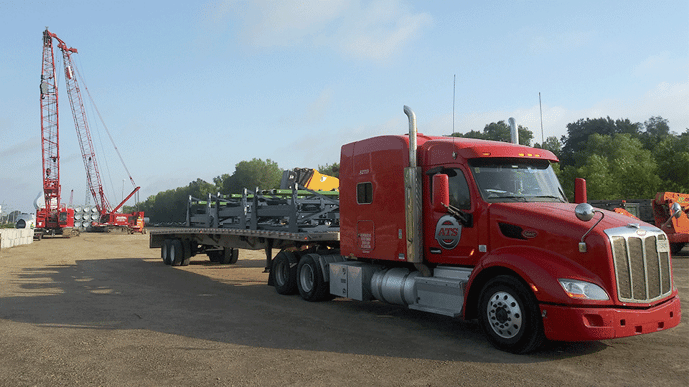
How to Avoid This Issue
Transparency will be your best friend here. Even if you’re on the fence about whether to share information about maneuverability issues, we’d recommend you do so.
Take advantage of your assigned point of contact at your transportation carrier by sending them photos of hard to maneuver areas.
The more information you include here, the better off you’ll be. With this knowledge, your trucking company will be able to find a more experienced driver if necessary, helping you avoid the unnecessary delays this issue can cause.
Start a Great Partnership Today, Avoid These Problems Tomorrow!
With a well-rounded understanding of these six common problems, now you see how crucial solid partnerships are to flatbed transportation processes. In an industry with thousands of trucking companies to choose from, though, it’s tough to pick your best-fit provider from the field.
Great flatbed carriers will work with you to avoid these problems initially. And, as you optimize together over time, you’ll have no trouble removing these issues from your supply chain entirely.
But what should you look for in a great carrier? What questions should you ask during vetting conversations?
To help you get this right and select a company with the experience, resources and wherewithal to meet your unique transportation needs, we’ve compiled a tool.
Download the free Flatbed Carrier Selection Checklist today and fill your network with dependable trucking partnerships.
Finally, if you have questions about what using ATS for your open-deck transportation needs could mean, check out our Flatbed Shipping Service Page now.
We’re happy to help you on your journey toward becoming the supplier that always delivers.




